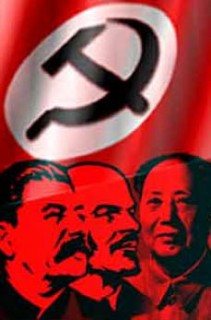…by Jonas E. Alexis
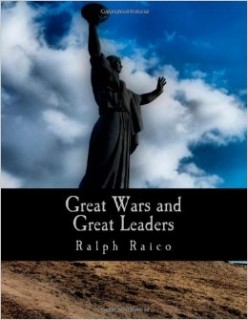 In his book Great Wars & Great Leaders,[1] scholar Ralph Raico points out,
In his book Great Wars & Great Leaders,[1] scholar Ralph Raico points out,
“Why is it self-evident that morality required a crusade against Hitler in 1939 and 1940, and not against Stalin? At that point, Hitler had slain his thousands, but Stalin had already slain his millions.
“In fact, up to June, 1941, the Soviets behaved far more murderously toward the Poles in their zone of occupation than the Nazis did in theirs.
“Around 1,500,000 Poles were deported to the Gulag, with about half of them dying within the first s. As Norman Davies writes: ‘Stalin was outpacing Hitler in his desire to reduce the Poles to the condition of a slave nation.’”[2]
This is a historically rational point. For we all know what Stalin was up to by 1932, when he liquidated more than five million peasants. No Western nation put pressure on him or told him to stop slaughtering those innocent people.
We can historically say that Stalin’s willing executioners were none other than the Dreadful Few. We know for example that the complex social issues of the 1920s, such as the Bolshevik Revolution in Russia, were largely viewed as Jewish revolutionary activities.[3]
During the Bolshevik Revolution millions upon millions of people were liquidated, including innocent peasants.[4] In addition, the Bolshevik ideology, with its Marxist/Communist and therefore diabolical leanings, began to spread like wildfire in Asian countries like China,[5] and wherever it went countries began slaughtering their own people by the millions.[6]
Leaders both in America and Europe knew that Bolshevism was creating political terrorism in Russia and would eventually try to conquer much of the world.
For example, the U.S. State Department published a three-volume report in 1931 stating that Jewish-owned German banks conspired to send large sums of money to Lenin, Trotsky, and other Bolshevik luminaries to overthrow the Tsar.[7]
Jewish financiers such as Jacob Schiff in the United States and Max and Paul Warburg in Germany poured millions of dollars into the Bolshevik movement. Schiff is said to have given $20 million dollars to the regime—a sum equivalent to billions of dollars today.[8]
By 1937, long before Hitler had significant political power, Stalin had already starved and executed as many as ten million peasants.[9] This period in history—from 1929-1937—is known as the Red Holocaust.[10]
By 1938, a total of 9.7 million perished, and from 1939 until 1953, another 9 million lost their lives.[11] From 1937-1939, Stalin executed 50,000 clergymen alone.[12]
Stalin’s terrorism began as early as 1918, when
“he ordered the execution of all suspected counter-revolutionaries. Stalin burned villages in the countryside to intimidate the peasants and discourage bandit raids on food supplies a decade before he became Red tsar.”[13]
Noted historian J. Otto Pohl writes that
“the Soviet Koreans were the first nationality the Stalin regime deported in its entirety on the basis of their ethnicity. It was an act of national repression on a grand scale.”[14]
Norman Naimark declares that
“a good argument can be made that Stalin intended to systematically wipe out the kulaks as a group of people—not just metaphorically as a class—and that therefore the result can be considered genocide.”[15]
Later he continued, “The principled abstention from using the term genocide can serve politicized purposes as much as its application to specific historical circumstances.”[16]
Even after World War II, Stalin did not stop terrorizing the peasants.[17] Minority groups such as the Greeks, Germans, Turks, Orthodox Christians, Lithuanians, and Vlasovites also fell prey to Stalin’s ethnic cleansing.[18]
For Lenin, the real enemy was the Church. He passionately declared in 1922,
“Now and only now, when there is cannibalism in the famine areas and hundreds, if not thousands, of corpses are lying on the roads, we can (and therefore must) carry out the confiscation of Church valuables with the most furious and merciless energy, not stopping at the crushing of any resistance…
“Therefore I come to the inevitable conclusion that it is now that we must give the most decisive and merciless battle to the obscurantist clergy and crush its resistance with such cruelty that they won’t forget it for several decades.”[19]
Historian Donald Rayfield of the University of London, who is not even a church sympathizer, noted,
“In the parishes some 2,700 priests and 5,000 monks and nuns perished. Across Russia there were 1,400 bloody confrontations between Cheka or Red Army and parishioners, and over 200 trials.
“On March 20, 1922, the Cheka ‘indicted’ Patriarch Tikhon for counterrevolutionary activity despite the latter’s eagerness to compromise; Trotsky wanted to arrest the entire Holy Synod.”[20]
Senior clerics were arrested in Moscow and some were shot and sentenced to death.[21]
There is no way that Hitler could square historically with Stalin’s Red Holocaust, even if we accept the historically perverse claim that six million Jews did die in Nazi Germany. As Rosefielde notes,
“Communism is indelibly stained by the Red Holocaust. Nonetheless, the will to deny, blur, soften, mitigate and pardon communist high crimes against humanity persists for complex personal, partisan, academic, cultural, political and pragmatic reasons.”[22]
According to Rosefielde, Stalin was involved in the ethnic cleansing of the peasants by violent means, including executions, terror, and starvation, beginning with an attempt in 1917.[23] As he puts it,
“The peasantry was the Bolsheviks’ first and primary target, because it did not fit Lenin’s Marxist paradigm, founded on the criminalization of private property, business and entreprenurship.”[24]
We see the same pattern in Communist China, where Mao “forcibly collectivized the peasantry.”[25] In the end, Communist China was responsible for the death of at least forty million.[26]
When all is said and done, The Black Book of Communism tells us that the Soviet regime and its communist ideals were responsible for the death of one hundred million people. Other historians would reduce that number to approximately 60 million.[27]
In a nutshell, whenever Jewish revolutionary activity is consistently followed, there will always be bloody conflict, which may result in the death of millions.
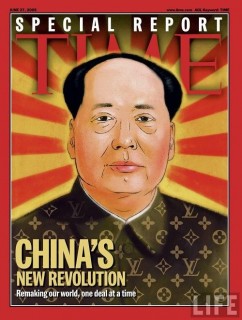 When Mao for example followed communist and socialist philosophy, which inexorably flowed from the pens of people like Karl Marx and Moses Hess and Ferdinand Lassalle, historian Frank Dikotter tells us that “between 1958 and 1962, China descended into hell.”[28]
When Mao for example followed communist and socialist philosophy, which inexorably flowed from the pens of people like Karl Marx and Moses Hess and Ferdinand Lassalle, historian Frank Dikotter tells us that “between 1958 and 1962, China descended into hell.”[28]
In 1949, Mao went to Russia in order to learn from the Soviet Union, and from 1955-1956, he started to implement Stalin’s collectivization.[29]
Like Stalin, Mao got rid of religion in society:
“Religion had no place in the people’s communes: churches, temples and mosques were turned into workshops, canteens and dormitories.
“In Zhengzhou, eighteen out of all twenty-seven places of worship for Catholics, Protestants, Buddhists and Muslims were taken over, and a further 680 rooms privately rented out by religious congregations were confiscated.
“The city was proud to announce by 1960 that the number of Christian and Muslim worshippers had shrunk from 5,500 to a mere 377. All eighteen religious leaders now participated in ‘productive labour’—except for three who had died.”[30]
In general, Mao created a living hell in China, his regime being responsible for the death of more than 40 million during four years alone: 1952-1962. And this living hell was quickly picked up by neighboring countries such as Cambodia, whose leaders also followed the communist ideology.
Starvation in Mao’s communist kingdom was so rampant that a number of people began to eat human flesh.[31] In the summer of 1958, the famine was so horrible that
“some people eventually dug up, boiled and ate human bodies. Soon the practice appeared in every region decimated by starvation, even in a relatively prosperous province such as Guangdong.”[32]
There were also instances where “several children were eaten.”[33]
Other terrible acts of cannibalism were widespread in places such as Tongwei, Yumen, Wushan, Jingning, and Wudu, and the communist leaders knew that these acts were taking place.[34]
In one place, for example, “a seventy-year-old woman unearthed the bodies of two small children and cooked them for herself.”[35]
Other inhumane acts were widespread, such as tying a ten-year old and throwing him into a bog where he died after a few days.[36]
Other people were left in the cold, naked, where many of them died—and even pregnant women were no exception.[37]
In other instances, excrement and urine were used as a punishment to cover people. One individual was forced to swallow excrement, and died a few weeks later.[38]
Other punishment such as nailing people’s ears to the wall was also common.[39] Another extreme form of torture was burying people alive.[40] As a result, in order to escape torture, many ended up taking their own lives.[41] For instance,
“In Shantou a woman accused of theft tied her two children to her body before jumping into the river.”[42]
Here again we see that Marxism, Communism, Stalinism, and now Zionism/Neo-Bolshevism/Neoconservatism are not just political or intellectual enterprises.
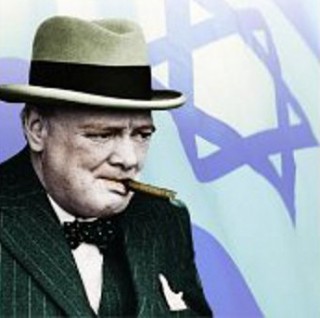
In general, those movements have detrimental ramifications if they are followed through consistently.
At their core, they are metaphysical rejections of the Logos, and by rejecting Logos as the measure of all things, those movements embrace to a large extent the opposite of reason as the ultimate metaphysical meaning to bring about heaven on earth, which always turns out to be hell on earth.
The book of Revelation has a specific term for this diabolical activity: the synagogue of Satan. Denis Fahey would have probably called this “the Mystical Body of Satan.”[43]
This diabolical system, to use Churchill’s own words, “has been the mainspring of every subversive movement during the Nineteenth Century”[44] and will continue to shake the world with its political, social, and spiritual horror.
As we saw in the previous article, Churchill started out well by writing one of the most provocative articles in the twentieth century, “Zionism Vs. Bolshevism: A Struggle for the Soul of the Jewish People.”
Yet instead of thinking this through seriously and following his moral and practical reasoning, Churchill ended up falling under the guiding hands of Zionism, which quickly allowed him to see notorious mass murderers such as Stalin and even Tito as kindred spirits.[45]
At one point, “when an aide pointed out that Tito intended to transform Yugoslavia into a Communist dictatorship on the Soviet model,” Churchill, who was “profoundly impressed by Darwinism,” who took Darwin’s survival of the fittest very seriously, who “took a particular dislike, for some reason, to the Catholic Church, as well as Christian missions” and who gradually became, in his own words, “a materialist—to the tips of my fingers,”[46] declared: “‘Do you intend to live there?’”[47]
Here Churchill once again could not realize that he was making a case for Nazi Germany, which he hated with a passion.
Let us grant for a moment that Hitler wanted to turn Germany into a place where Jews would simply have no chance. Did Churchill intend to live in Germany? Why was he so concerned about reducing Germany into abject servitude? Why did he hate Hitler so much? Raico writes,
“The massacres carried out by Churchill’s protégé, Tito, must be added to this list: tens of thousands of Croats, not simply the Ustasha, but any ‘class-enemies,’ in classical Communist style.
“There was also the murder of some 20,000 Slovene anti-Communist fighters by Tito and his killing squads. When Tito’s Partisans rampaged in Trieste, which he was attempting to grab in 1945, additional thousands of Italian anti-Communists were massacred.”[48]
“From the outset of hostilities, Churchill, as head of the Admiralty, was instrumental in establishing the hunger blockade of Germany.
“This was probably the most effective weapon employed on either side in the whole conflict. The only problem was that, according to everyone’s interpretation of international law except Britain’s, it was illegal…
“But, throughout his career, international law and the conventions by which men have tried to limit the horrors of war meant nothing to Churchill…About 750,000 German civilians succumbed to hunger and diseases caused by malnutrition..
“The effect on those who survived was perhaps just as frightful in its own way. A historian of the blockade concluded: ‘the victimized youth [of World War I] were to become the most radical adherents of National Socialism.’[49]
“Churchill even had a hand in the barrage of pro-British, anti-German propaganda that issued from Hollywood in the years before the United States entered the war.”[50]
Churchill made it clear that Hitler, not Stalin or Tito, was his primary target: “the defeat, ruin, and slaughter of Hitler, to the exclusion of all other purposes, loyalties and aims.”[51]
When Stalin and other Communist leaders were creating hell in Europe in the Bolshevik slaughter houses, perceptive observers began to get upset. Yet again Churchill’s response was astonishing:
“Why are we making a fuss about the Russian deportations in Rumania of Saxons [Germans] and others?…
“I cannot see the Russians are wrong in making 100 or 150 thousand of these people work their passage….
“I cannot myself consider that it is wrong of the Russians to take Rumanians of any origin they like to work in the Russian coal-fields.”[52]
In 1915, after provoking other nations to get into World War I, Churchill declared, “I know this war is smashing and shattering the lives of thousands every moment—and yet—I cannot help it—I love every second I live.”[53]
Churchill wanted to literally destroyed Germany because he perversely thought that Germany was the cause of evil in the world. He declared in 1943,
“The twin roots of all our evils, Nazi Germany and Prussian militarism, must be extirpated. Until this is achieved, there are no sacrifices we will not make and no lengths in violence to which we will not go.”[54]
 Yet he knew very well that he was propagating lies at the expense of truth. In his widely read book on the war, he declared,
Yet he knew very well that he was propagating lies at the expense of truth. In his widely read book on the war, he declared,
“The human tragedy reaches its climax in the fact that after all the exertions and sacrifices of hundreds of millions of people and of the victories of the Righteous Casue, we have still not found Peace or Security, and that we lie in the grip of even worse perils than those we have surmounted.”[55]
Churchill, then, was implicitly following a diabolical plan, and this became very apparent when it was widely known that the destruction of Dresden created literal panic across Germany and much of Europe.
“At least 30,000 people were killed, perhaps tens of thousands more. The Zwinger Palace; Our Lady’s Church (die Frauenkirche); the Bruhl Terrace, overlooking the Elbe where, in Turgenev’s Fathers and Sons, Uncle Pavel went to spend his last years; the Semper Opera House, where Richard Wagner conducted the premieres of The Flying Dutchman and Tannhauser and Richard Strauss the premiere of Rosenkavalier; and practically everything else was incinerated…
“On March 16, in a period of twenty minutes, Wurzburg was razed to the ground. As late as the middle of April, Berlin and Potsdam were bombed yet again, killing another 5,000 civilians.”[56]
Churchill knew that he was one of the men who fomented all that. Yet how did he respond to the aftermath? Listen very carefully:
“I cannot recall anything about it [Dresden]. I thought the Americans did it.”[57]
By October of 1944, he told Stalin: “The problem was how to prevent Germany getting on her feet in the lifetime of our grandchildren.”[58]
Churchill, then, certainly did not really believe in what he wrote in “Zionism vs. Bolshevism”: “Reiterated warning from Adam von Trott and other resistance leaders of the impending ‘bolshevization’ of Europe made no impression at all on Churchill.”[59]
In short, one can say that Churchill was one of Stalin’s willing executioners, for “In place of help, all Churchill offered Germans looking for a way to end the war before the Red Army flooded into Central Europe was the slogan of unconditional surrender.”
But unconditional surrender also implied that the United States would be able to apply the Morgenthau Plan,
“which gave the Germans a terrifying picture of what ‘unconditional surrender would mean. This plan, initialed by Roosevelt and Churchill at Quebec, called for turning Germany into an agricultural and pastoral country; even the coal mines of the Ruhr were to be wrecked.”[60]
Raico writes,
“With the attack on the French fleet, Churchill confirmed his position as the prime subverter through two world wars of the system of rules of warfare that had evolved in the West over centuries.
“But the great war crime which will be forever linked to Churchill’s name is the terror-bombing of the cities of Germany that in the end cost the lives of around 600,000 civilians and left some 800,000 seriously injured.
“(Compare this to the roughly 70,000 British lives lost to German air attacks. In fact, there were nearly as many French killed by Allied air attacks as there were English killed by Germans.)”[61]
When all is said and done, it was pretty clear to perceptive observers and scholars that Churchill and Roosevelt intended to destroy Germany.
“No wonder that, learning of this, a civilized European like Joseph Schumpeter, at Harvard, was driven to telling ‘anyone who would listen’ that Churchill and Roosevelt were destroying more than Genghis Khan…
“Winston Churchill was a Man of Blood and a politico without principle, whose apotheosis serves to corrupt every standard of honesty and morality in politics and history.”[62]
Churchill, Stalin, and indeed Roosevelt did destroy Germany. As Thomas Goodrich rightly points out,
“What had taken the German nation over two millennia to build, had taken its enemies a mere six years to destroy.
“When the fighting finally ended on May 8, 1945, the Great German Reich which had been one of the most modern industrial giants in the world lay totally, thoroughly and almost hopelessly demolished.
“Germany, mused an American newsman drifting through the rubble, resembled nothing so much as it resembled ‘the face of the moon.’
“Omar Bradley agreed. After viewing for himself the blackened, smoking wreck, the US general reassured his countrymen, ‘I can tell you that Germany has been destroyed utterly and completely.’”[63]
Lastly, the Nuremberg Trials were simply a laughing stock. During those trials, most of Stalin’s judges and willing executioners were the actual prosecutors! Those people were “seasoned veterans of the purges of the ‘30s…”[64]
So here is the logic: Stalin’s hangmen liquidated more than 10 million people in less than three years, but those same hangmen and assassins would later preside over the Nuremberg Trials. It is indeed pathetic.
If we are going to commemorate the dead—whether it is the people who died in Nazi Germany or under Communist regimes—let us commemorate them all, not just a select few.
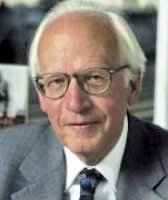
It is irrational and immoral to have dozens of museums dedicated to people who died in Nazi Germany while there is not a single museum for people—including Christians—who died under Bolshevik or Communist regimes.
When German historian and philosopher Ernst Nolte raised a similar point some years ago, Israeli historian Yehuda Bauer charged that Nolte clearly wanted
“to free German society from bearing any particular responsibility for World War II, and the Holocaust in particular.”[65]
Yet a few paragraphs later, Bauer, to much astonishment, declared that he would want
“to universalize the Holocaust to the extent that people include in it the fate of the Gypsies, of Poles, Czechs, Russians, Ukranians, Serbs, and the German handicapped.”[66]
Isn’t that precisely the point that Nolte was making? Why couldn’t Bauer remain consistent?
Despite historical evidence to the contrary, Bauer still maintains that “the murder of the Jews” in Nazi Germany “was unique.”[67]
Bauer is not done. He risibly and sanctimoniously declares that German and Jewish written documents are not reliable and, for him,
“Documents were written to hide things, not to explicate them; not always, to be sure, but at several rather crucial points. We cannot rely solely, or even mainly, on German documentation as the oracle that will give us a true picture.”[68]
Documents, like any other legal papers, have to be examined in order to be considered reliable. But that is not what Bauer seems to be pushing. He is pushing for a more “reliable” source: “So the main source is oral testimonies.”[69]
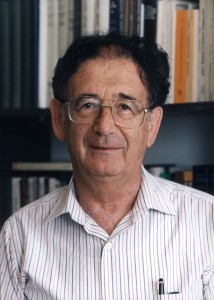
We have seen how many oral testimonies, later written in book forms, have proved to be detrimental in Jewish studies, and it is far-fetched to say that they should be our main sources.
We know for example that oral testimonies—most specifically by Illya Ehrenberg—repeated for years that the Nazis made soap out of Jewish fat. Are we to believe this?
If oral testimonies were our main sources, then the soap story would still be popular propaganda even today.
We have shown numerous times that there was a “convergence of evidence” showing that people were gassed at Belsen, Dachau, and other places; there was a “convergence of evidence” showing that the Nazis used Jewish fat to make soap.
Alleged eyewitnesses were summoned, supposed documents were used, photographs were forged, and physical evidence was fabricated. Those claims were made by a wide range of Jewish organizations, including Simon Wiesenthal.
These stories, particularly the soap story, spread like wildfire in Poland, Slovakia, and even Germany. This was so popular that “by July 1942 rumours were rife all over Eastern Europe that Jews were killed in great numbers and ‘boiled into soap.’”[70]
Yet no serious historian would even put his credibility on the line saying that the Nazis did make soap out of Jewish fat.
The only people I know who seem to believe this nonsense are half-baked Michael Shermer and Alex Grobman. They declare that “Soap was never manufactured on an industrial scale from victims’ bodies, but it may have been done experimentally.”[71]
Shermer and Grobman never told us how they came to know that the soap story was false. And the sad and tragic part of all this is that people who first questioned the soap story and other “Shoah” fabrications long before Shermer and Grobman were and still are being persecuted for their alleged crimes!
Take for example Dr. Fredrick Toben. Because of his skeptical mind and because he questioned key aspects of the Holocaust story, Toben has been an object of ridicule and indeed humiliation all over Europe.
Last May, the Sydney Morning Herald quoted Senator Brandis as saying that Toben is a “nutter.”[72] And here is how Brandis continues to dismiss Toben:
“I’ve never read anything that Mr Toben has said but I’m aware of his views from press reports and views I’ve heard attributed to Mr Toben are absolute rubbish.”[73]
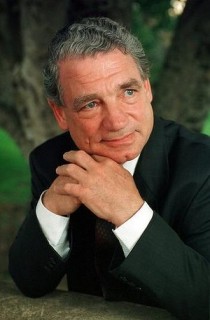
He’s got to be kidding. He’s calling Toben a “nutter” without even reading what he has actually published? Who is the real nutter? Brandis has more bullets in his political pistol. Listen to this:
“I don’t agree with Mr Toben but I do agree with President Barack Obama who said last week in relation to the Donald Sterling case: ‘when people, when ignorant folks want to advertise their ignorance, you don’t have to do anything, you just let them talk.’”[74]
If he really wants people like Toben to talk, why has Toben in particular been literally denigrated and fined for his views? I contacted Toben and here’s what he told me:
“I was forced into bankruptcy of $230,000+ because legal aid would not cover such proceedings [the cases against him].”
He also warned me:
“Be wise, and if you can withstand the stress of being a dissenter without hurting your love ones, then the historical examples…should guide you through this legal minefield…
“There will be attempt to destroy your moral stance but remain firm because truth is your defense.”
I admire people like Toben because they see truth, not ideology, as their destination. Toben wrote:
“I am a Holocaust questioner because that is what my philosophical training was all about – to question the veracity of what Holocaust historians have constructed in their narrative.
“Throughout these past seventy years this narrative has constantly changed while being fixed in legal concrete, and I object to such mechanism that has often protected outright lies at the expense of truth emerging, which directly impacts on our free expression – the hallmark of our civilization.
“So, I question any aspect, any assertion made in those many Holocaust-Shoah narratives for truth-content, otherwise I would be offending against my philosophical training and would support the construction of an ideology.”
This is certainly rational and defensible position, which has some intellectual backbone. Moreover, Toben has said almost the same thing that many Jewish historians have publically uttered for years.
For example, Jewish historian Tim Cole unapologetically declared that “Shoah business is big business” in the twentieth century.[75]
Yet when Toben ends up saying the same thing, he is somehow a “Holocaust denier”! Listen to how Australian Senator Christine Milne vilifies Toben:
Why doesn’t Milne get a search warrant on Cole? Why doesn’t she declare that Cole was defaming the dead in his widely read book Selling the Holocaust? Why doesn’t she say the same thing about Jewish historians like Raul Hilberg, who did not even believe in the six-million figure? Could it be that Milne is just a Zionist puppet?
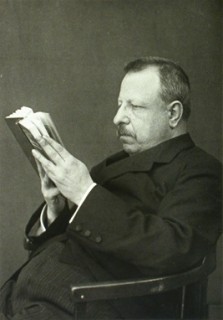
Italian philosopher and historian Benedetto Croce (1866-1952) wrote in his celebrated work Theory and History of Historiography:
“History is never constructed from narratives, but always from documents, or from narratives that have been reduced to documents and treated as such…
“A history without relation to the document would be an unverifiable history; and since the reality of history lies in this verifiability, and the narrative in which it is given concrete form is historical narrative only in so far as it is a critical exposition of the document, a history of that sort, being without meaning and without truth, would be inexistent as history…
“Thus to talk of a history of which the documents are lacking would appear to be as extravagant as to talk of the existence of something as to which it is also affirmed that it is without one of the essential conditions of existence.”[76]
This is the historical method, and historians, whether they like it or not, must abide by that principle in order to do real history. And yet Yehuda Bauer writes,
“I would argue that when we have ten independently recorded, conversing and comparable testimonies, they are more reliable than a document about the same situation written by some German or Jewish source, or by a Polish bystander. And for most Jewish communities destroyed by the Nazis there is very little or no written documentation.”[77]
As we have already seen, Bauer’s point here is purely non sequitur for the very reason that a wicked ideology can be orally passed down from one generation to the next without serious examination. We have already seen how the soap story spread like a virus.
Bauer has already asserted that the German written documents cannot be trusted, so little will convince him if it happens to be shown that what he believes is simply an imaginary world.
The fact is that it can hardly be shown that “very little or no written documentation” is existed. The archives are full of documentation that historians like Bauer do not care to search because, well, archival documents do not matter for those people.
Finally, if very little or no written documentation survives, there is no need to make authoritative statements about the Holocaust, for Bauer himself would be arguing from a lack of evidence, which is not real history at all.
Since Bauer relies heavily on oral testimony, he too has been deceived. In the forward of Filip Muller’s book Eyewitness Auschwitz: Three Years in the Gas Chambers, he wrote,
“Muller is neither a psychologist nor a historian. Since he first published his memoir in the 1970s, we have learned a great deal about Auschwitz, so that we now know that there are inaccuracies in some of his statistics and diagrams as presented here.
“As far as these items are concerned, the reader should refer to historical accounts published in the more recent past.”[78]
Precisely. In fact, the Holocaust story is full of holes. To cite again Norman Finkelstein,
“Articulating the key Holocaust dogmas, much of the literature on Hitler’s Final Solution is worthless as scholarship. Indeed, the field of Holocaust studies is replete with nonsense, if not sheer fraud. Especially revealing is the cultural miliew that nurtures this Holocaust literature.”[79]
Where is Christine Milne when you need her?
[1] Thanks to a reader who recommended this book to me.
[2] Ralph Raico, Great Wars & Great Leaders (Auburn: Ludwig von Mises Institute, 2010), 80.
[3] See Yuri Slezkine, The Jewish Century (Princeton: Princeton University Press, 2004); Carr Hallett Edward, The Bolshevik Revolution (New York; Macmillan, 1950); Stephen Cohen, Bukharin and the Bolshevik Revolution (New York: Oxford University Press, 1980); Adam B Ulam, Bolsheviks (Cambridge: Harvard University Press, 1980); Jerry Z. Muller, Capitalism and the Jews (Princeton: Princeton University Press, 2010). Many scholars do not declare that Jews were at the forefront of the revolution because this would imply that anti-Jewish reactions would have to be reassessed.
[4] See Robert Conquest, Harvest of Sorrow: Soviet Collectivism and the Terror-Famine (New York: Oxford University Press, 2008) and The Great Terror (New York: Oxford University Press, 1990); Miron Dolot, Execution by Hunger: The Hidden Holocaust (New York: W. W. Norton, 1987).
[5] See Steven Rosefielde, Red Holocaust (New York: Routledge, 2010).
[6] See Frank Dikotter, Mao’s Great Famine (New York: Walker, 2010).
[7] http://avalon.law.yale.edu/subject_menus/forrel.asp.
[8] See Gary Allen, None Dare Call It Conspiracy (Cutchogue, NY: Buccaneer Books, 1976).
[9] Rosefielde, Red Holocaust, 40.
[10] Ibid., 50.
[11] Ibid., 20.
[12] Ibid., 44.
[13] Ibid., 42.
[14] J. Otto Pohl, Ethnic Cleansing in the USSR, 1937-1949 (Santa Barbara, CA: Greenwood Press, 1999), 9.
[15] Norman Naimark, Stalin’s Genocide (Princeton: Princeton University Press, 2010), 63.
[16] Ibid., 124.
[17] Steven Rosefielde, The Red Holocaust (New York: Routledge, 2010), 46.
[18] Ibid., 79-80.
[19] Donald Rayfield, Stalin and His Hangmen: The Tyrant and Those Who Killed for Him (New York: Random House, 2005), 126.
[20] Ibid.
[21] Ibid, 126-127.
[22] Rosefielde, Red Holocaust, 7.
[23] Ibid., 35.
[24] Ibid., 35-36.
[25] Ibid., 103.
[26] See Dikotter, Mao’s Great Famine.
[27] See Rosefielde, Red Holocaust.
[28] Dikotter, Mao’s Great Famine, ix.
[29] Ibid., xvii.
[30] Ibid., 167.
[31] Ibid., 320.
[32] Ibid.
[33] Ibid.
[34] Ibid., 321-323.
[35] Ibid., 323.
[36] Ibid., 294.
[37] Ibid., 294-295.
[38] Ibid., 295.
[39] Ibid., 295-296.
[40] Ibid., 296.
[41] Ibid., 304-305.
[42] Ibid., 305.
[43] See Hugh Akins, Synagogue Rising (Orlando: Catholic Action Resource Center, 2012), vii.
[44] Churchill, “Zionism versus Bolshevism,” Illustrated Sunday Herald.
[45] Raico, Great Wars & Great Leaders, 84-85.
[46] Ibid., 59.
[47] Ibid., 85.
[48] Ibid., 95.
[49] Ibid., 65-66.
[50] Ibid., 76.
[51] Ibid., 81.
[52] Ibid., 95.
[53] Ibid., 101.
[54] Ibid.
[55] Ibid., 98.
[56] Ibid., 92.
[57] Ibid., 101.
[58] Ibid., 85.
[59] Ibid., 86.
[60] Ibid., 87.
[61] 89.
[62] Ibid., 91, 101.
[63] Goodrich, Hellstorm, 277.
[64] Raico, Great Wars & Great Leaders., 97.
[65] Bauer, “A Past That Will Not Go Away,” Berenbaum and Peck, The Holocaust and History (Bloomington: Indiana University Press, 1998), 14-15
[66] Ibid., 16.
[67] Ibid., 16, 22.
[68] Ibid., 21.
[69] Ibid.
[70] Walter Laqueur, The Terrible Secret: Suppression of the Truth about Hitler’s “Final Solution” (New York: Henry Holt, 1998), 145.
[71] Michael Shermer and Alex Grobman, Denying History: Who Says the Holocaust Never Happened and Why Do They Say It? (Berkley: University of California Press, 2000), 117.
[72] Heath Aston, “Holocaust Denier Frederick Toben Backs George Brandis’ Plans for Discrimination Law,” Sydney Morning Herald, May 13, 2014.
[73] Ibid.
[74] Ibid.
[75] Tim Cole, Selling the Holocaust: From Auschwitz to Schindler, How History is Bought, Packaged and Sold(New York: Routledge, 2000), 1
[76] Croce, Theory and History of Historiography, introduction.
[77] Bauer, “A Past That Will Not Go Away,” Berenbaum and Peck, The Holocaust and History, 21.
[78] Filip Muller, Eyewitness Auschwitz: Three Years in the Gas Chambers (Chicago: Ivan R. Dee, 1999), ix-x.
[79] Norman Finkelstein, The Holocaust Industry: Reflections on the Exploitation of Jewish Suffering (New York: Verso, 2000), 55
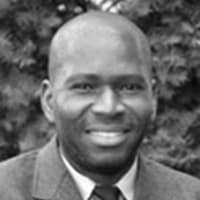
Jonas E. Alexis has degrees in mathematics and philosophy. He studied education at the graduate level. His main interests include U.S. foreign policy, the history of the Israel/Palestine conflict, and the history of ideas. He is the author of the new book Zionism vs. the West: How Talmudic Ideology is Undermining Western Culture. He teaches mathematics in South Korea.
ATTENTION READERS
We See The World From All Sides and Want YOU To Be Fully InformedIn fact, intentional disinformation is a disgraceful scourge in media today. So to assuage any possible errant incorrect information posted herein, we strongly encourage you to seek corroboration from other non-VT sources before forming an educated opinion.
About VT - Policies & Disclosures - Comment Policy

